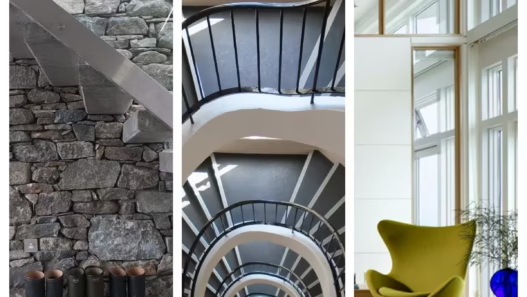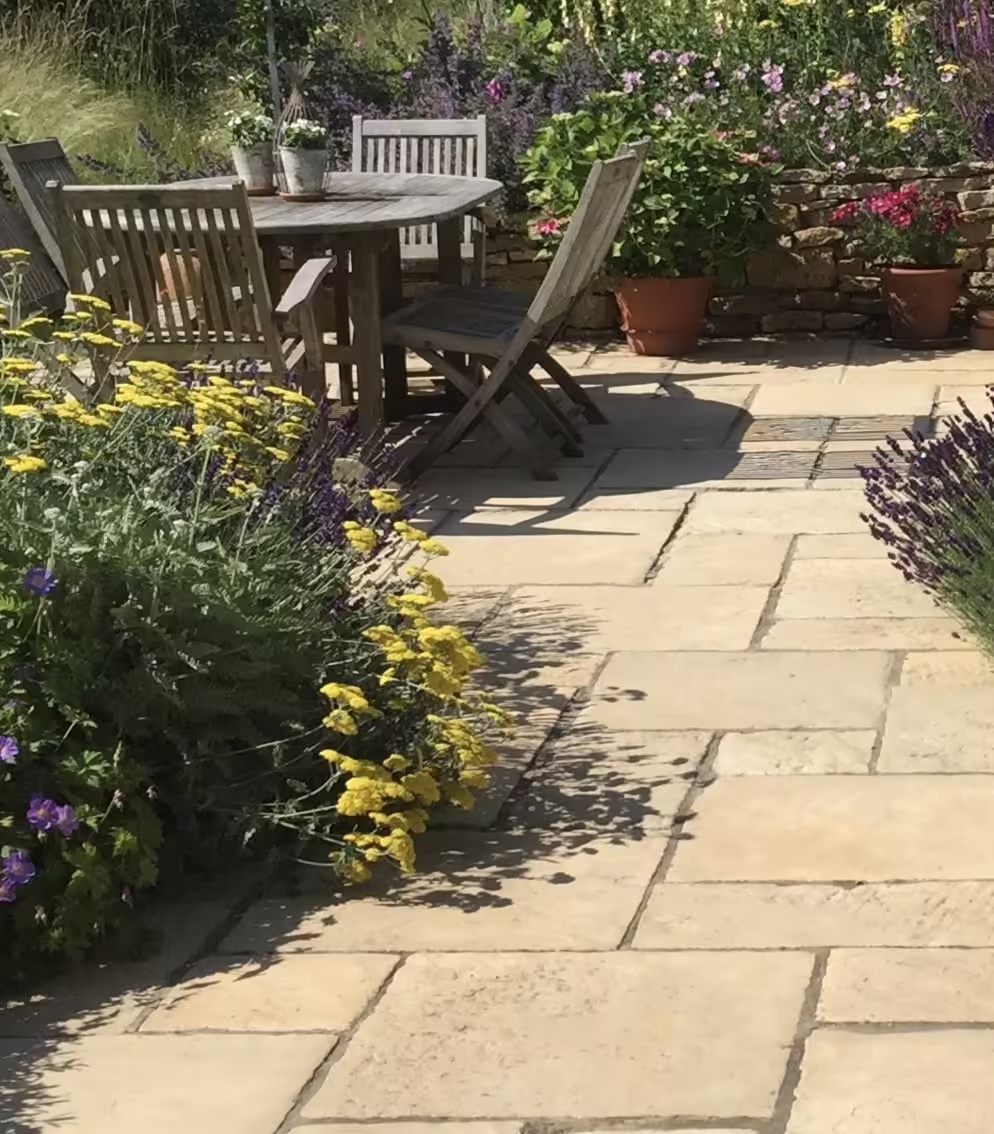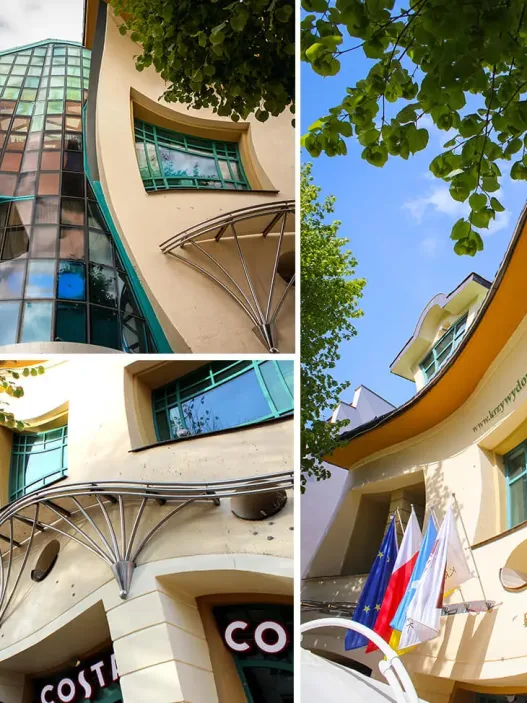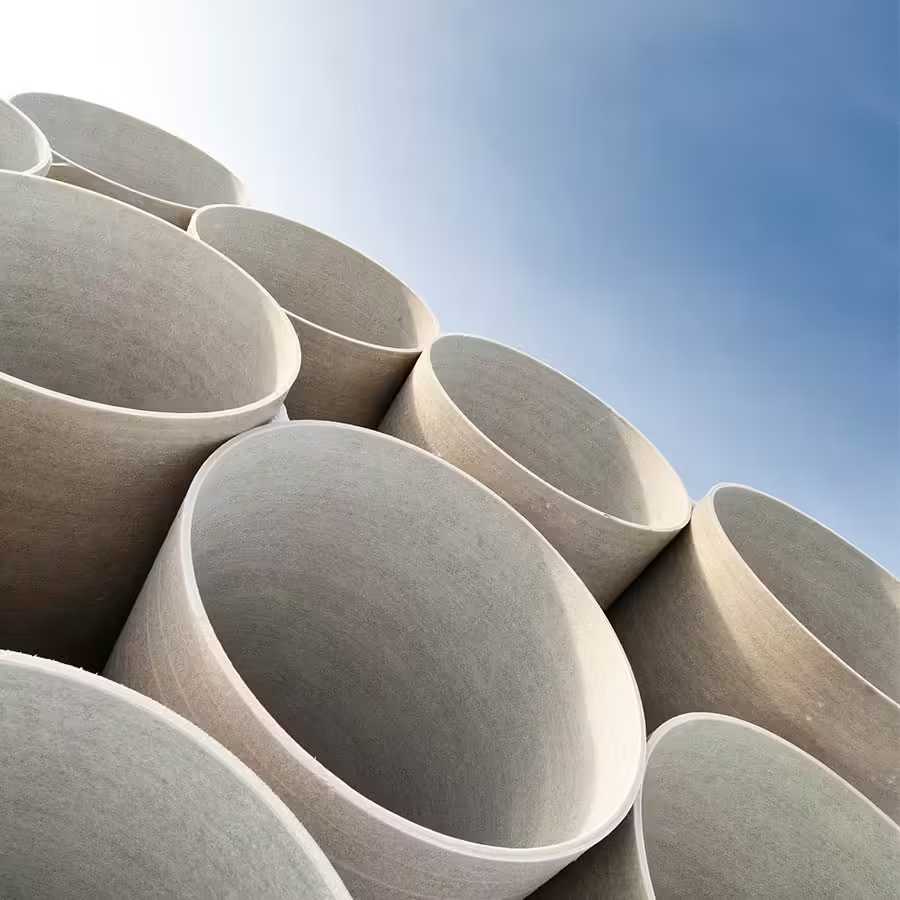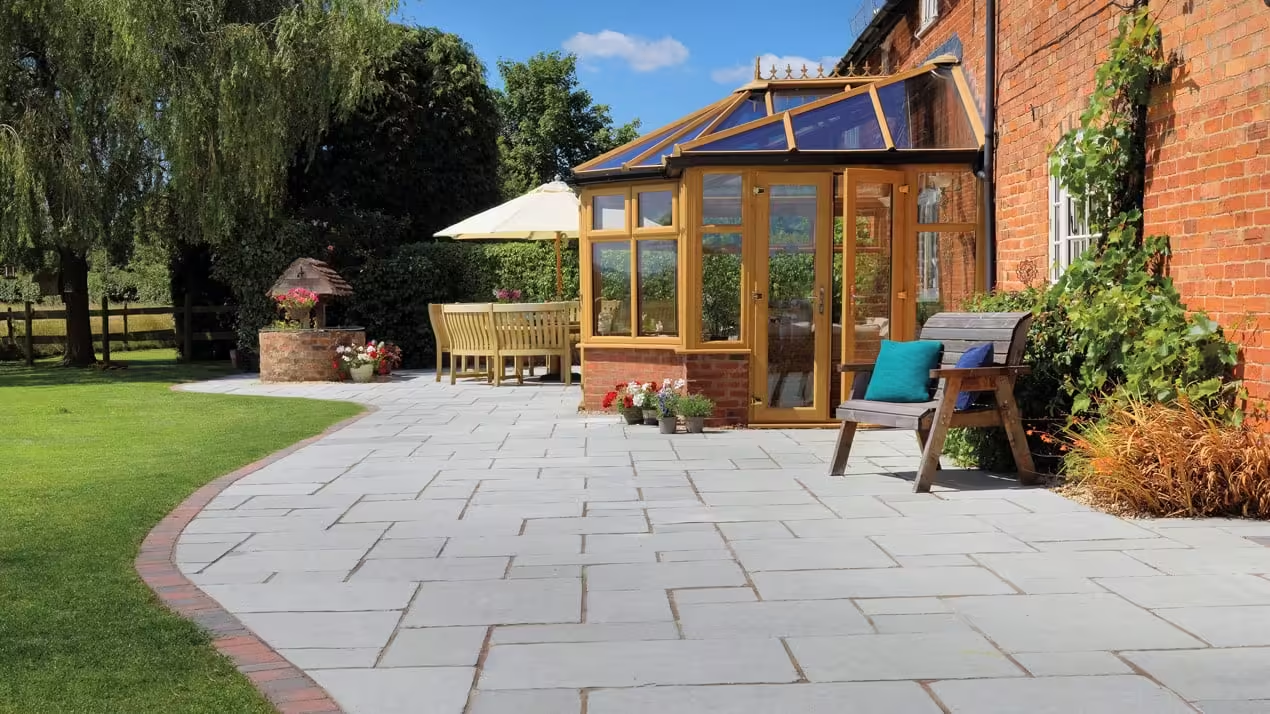Flagstone is a term that conjures up images of warm, sunny patios, rustic pathways and tranquil garden spaces. This flat, sedimentary rock is not only beautiful but also incredibly versatile, making it a popular choice for countless landscaping and architectural applications. Its unique texture and natural tones add a charm that enriches both residential and commercial spaces. As we delve deeper into paving stone, we will explore its definition, historical significance, various types, common uses and how it compares to other paving materials.
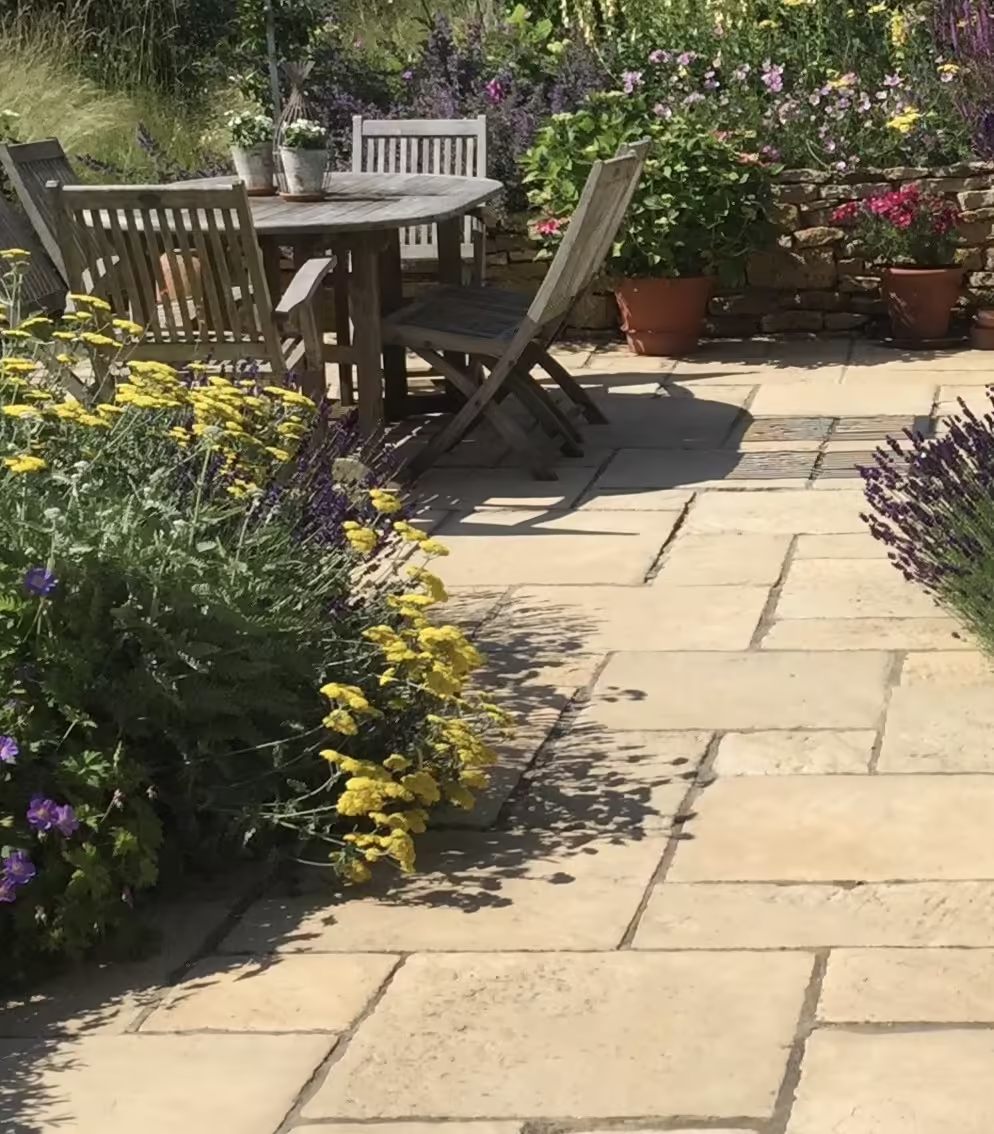
Definition of Flagstone
Flagstone refers to a type of sedimentary rock that has been broken into flat, thin pieces. This material typically consists of sandstone, limestone or slate and is characterized by its layered appearance and natural colors ranging from earthy browns and reds to cool greys and greens. The name “flagstone” comes from the word “flag”, which means a flat stone used for paving. Due to its durability and aesthetic appeal, flagstone is preferred for a variety of outdoor applications, providing not only functionality but also organic beauty to landscapes.
Historical Context
Paving stone has a rich history dating back thousands of years. Ancient civilizations used this material to build roads, courtyards and public spaces. The Romans, for example, are known to have used flagstone for extensive road networks that facilitated trade and communication throughout their empire. In the Middle Ages, flagstone became a popular choice for paving in castles and churches across Europe, where its durability and ease of maintenance were highly valued. Over the centuries, paving stone has continued to be embraced for its aesthetic qualities and practical benefits, evolving with architectural trends but always retaining its timeless appeal.
Types of Paving Stone
There are various types of paving stones, each with unique characteristics that make them suitable for different applications. Sandstone flagstones are known for their warm tones and ease of cutting, making them ideal for patios and walkways. Limestone flagstones offer a softer, more subtle color palette and are perfect for creating serene garden paths. Slate, on the other hand, is prized for its striking colors and layered texture and is often used in more sophisticated designs. Each type of paving stone adds a unique flavor to a project, allowing designers and homeowners to choose the right material to complement their vision.
Common Uses in Landscaping
Flagstone is a favorite among landscape architects and homeowners alike because of its versatility. It is often used for patios, walkways and garden paths, creating seamless transitions between different areas of a garden. The natural, irregular shapes of flagstone can be laid in a variety of patterns, allowing for creativity in design. Furthermore, flagstone is often used to build retaining walls, steps and even outdoor fireplaces, adding both functionality and aesthetic interest to outdoor spaces. Its ability to blend harmoniously with nature makes paving stone an excellent choice for creating inviting outdoor environments that encourage relaxation and enjoyment.
Flagstone and Other Paving Materials
When paving stone is compared to other paving materials, its unique properties become even more apparent. Unlike concrete, which can look stark and industrial, flagstone offers a natural look that blends with the landscape. While pavers can provide uniformity, the irregular shapes and colors of flagstone create a more organic look. In addition, flagstone is often more durable than many other materials; its resistance to cracking and weathering makes it suitable for a variety of climates. While more expensive than some alternatives, its longevity and low maintenance requirements often make it a wise investment for homeowners looking to enhance their outdoor spaces.
In summary, flagstone is much more than a paving material; it is a link to history, a canvas for creativity and a practical choice for the modern landscape. Its blend of beauty and functionality ensures that it will remain a beloved choice for generations to come.
Historical Importance of Flagstone
Paving stone, a flat stone often used for paving, has a rich history intertwined with the development of gardens and open spaces, especially in England. Its importance lies not only in its practical applications, but also in the aesthetic and cultural values it embodies. Flagstone’s versatility and durability have made it a material of choice for centuries, influencing garden design and landscape architecture.
Origins in English Gardens
The use of flagstone in English gardens dates back to ancient times, when it was favored for its natural beauty and practicality. Originally sourced from local quarries, flagstones were quarried for construction purposes, but their smooth surface and variety of colors soon made them popular for garden paths, terraces and patios. In the 16th and 17th centuries, the rise of formal garden design in England marked a significant increase in the use of paving stones. Symmetry and order were at the forefront of these gardens, and flagstone became the preferred choice for creating structured walkways that guided visitors through carefully manicured landscapes.
The aesthetics of cobblestone were further developed in the 18th century with the advent of the English Landscape Movement, which encouraged a more naturalistic approach to garden design. Here, the paving stones served not only as functional elements, but also as visual connectors between different areas of the garden, seamlessly integrating hard landscapes with lush green spaces.
The Impact of Climate on the Use of Pavers
Britain’s climate has played an important role in the use and adaptation of paving stone. The mild maritime climate, characterized by mild temperatures and abundant rainfall, means that gardens can thrive year-round, but it also brings challenges such as soil erosion and waterlogging. With its robust structure, flagstone offers the perfect solution to these problems. The permeability of the stone allows water to drain away, reducing the risk of muddy paths and creating a more stable surface for walking.
Different parts of the UK have also adopted specific paving stone styles and techniques depending on local climatic conditions. For example, in wetter parts of Wales, thicker, more textured paving stones are often used to prevent slipping, while drier areas may prefer lighter, smoother stones for their aesthetic appeal. This regional variation highlights how climate shapes not only the choice of materials but also the overall design of outdoor spaces.
Pavers in Important English Gardens
Many important English gardens throughout history have showcased the beauty and functionality of flagstone. A notable example of this is the gardens at Hampton Court Palace, where flagstone paths create a sense of grandeur and elegance, complementing the intricate design of the gardens. Here, the use of flagstone demonstrates the ability to harmonize with both formal and informal garden styles, enhancing the overall experience of the space.
Another notable example can be found at the Royal Botanic Gardens at Kew. Here, paving stones are used to create pathways that lead visitors through diverse plant collections and stunning landscapes. The careful placement of these stones not only serves a practical purpose, but also encourages visitors to interact with the natural beauty around them, inviting exploration.
These gardens exemplify how paving stone can be both functional and artistic, shaping the way people interact with their outdoor environments.
The Evolution of Paving Stone Techniques
Techniques for working with flagstone have evolved considerably over the centuries. In early times, flagstones were often cut and shaped by hand, a labor-intensive process that required considerable skill. Artisans selected the stones according to their thickness and texture, ensuring that each piece fit harmoniously into the overall design.
With the advent of modern tools and machinery, the process of quarrying and shaping paving stones has become much more efficient. Today, precision cutting techniques allow for a wider variety of shapes and sizes, giving designers more flexibility in their projects. This evolution has not only expanded the creative possibilities for the use of paving stones in gardens, but has also increased the durability of finished surfaces, making them more resistant to weathering and abrasion.
In addition, contemporary design trends increasingly favor sustainable practices, leading to a revival of traditional methods that emphasize local sourcing of materials. This mix of old and new techniques reflects the growing appreciation for heritage and craftsmanship in landscape design.
Preservation of Traditional Techniques
While modern techniques are transforming the use of paving stones, there is a growing movement to preserve traditional methods that define their historical significance. Artisans and landscape architects are increasingly recognizing the value of these techniques, not only for their aesthetic qualities, but also for their link to cultural heritage.
Workshops and training programs dedicated to traditional stonemasonry techniques are being created to ensure that these skills are passed on to future generations. This commitment to conservation means that flagstone can continue to be a vital part of English gardens, combining centuries-old craftsmanship with contemporary design principles.
By valuing these traditional methods, we are not only honoring the history of flagstone in horticulture, but also promoting a sustainable approach to landscape architecture that respects local materials and craftsmanship. The result is a rich outdoor fabric that tells a story of time, place and human creativity, all anchored by the permanent presence of the paving stone.
Design Principles of Pavestone Gardens
Flagstone gardens are a beautiful fusion of nature and design, where the natural look of stone meets the vibrant life of plants. These gardens create inviting outdoor spaces that can serve as tranquil retreats or lively gathering areas. The design principles behind paver gardens can significantly influence their aesthetic appeal and functionality. Let’s explore these principles in detail, focusing on symmetry, color, integration with plants, flow and seasonal considerations.
Symmetry and Balance
Symmetry and balance are fundamental concepts that contribute to visual harmony in garden design. Symmetry in a paving stone garden can be achieved through careful arrangement of stones and plants. Imagine a pathway surrounded by evenly spaced paving stones, leading to a central focal point, such as a beautiful sculpture or water feature. This arrangement creates a sense of order and calm, making the garden feel more harmonious.
Balance, on the other hand, revolves around the distribution of visual weight in the garden. This doesn’t mean that everything should be the same on both sides; rather, it’s about achieving a pleasing balance. For example, one side of the path could have a cluster of tall, flowering plants, while the opposite side could have lower, overhanging greenery. This interplay creates a dynamic visual experience while maintaining a sense of balance. By thoughtfully applying symmetry and balance, designers can create spaces that are not only beautiful but also cozy and inviting.
Color and Texture Reviews
Color and texture play an important role in the overall mood of a flagstone garden. The natural tones of flagstone, ranging from warm browns to cool grays, provide a neutral backdrop that complements a variety of plant colors. When choosing plants, consider their blooming season and foliage. Bright flowers can offer vibrant bursts of color, while lush foliage adds depth and richness to the landscape.
Textures also enhance the sensory experience of the garden. The rough surface of paving stones contrasts beautifully with the softness of delicate leaves or the feathery foliage of ornamental grasses. Mixing different textures creates visual interest and can guide the viewer’s eye throughout the space. For example, pairing smooth, rounded stones with rough paving stones can create a natural sense of variety, making the garden feel more organic. By carefully considering color and texture, designers can create gardens that are visually appealing and evoke a variety of emotions.
Integration with Plants
An important aspect of designing a flagstone garden is the integration of plants into the hardscape. This harmonious relationship can be achieved by choosing plants that complement the natural colors and shapes of the stone. Ground cover plants such as creeping thyme or sedum work wonderfully in the spaces between paving stones, softening hard edges and creating a seamless transition from stone to soil.
Including taller plants along the edges or in strategic clusters can create a layered effect, drawing the eye up and making the garden feel more expansive. Furthermore, using native plants not only enhances the aesthetics of the garden, but also supports local wildlife by promoting biodiversity. For example, a flagstone garden designed with native wildflowers can attract pollinators, adding life and movement to the space. By thoughtfully integrating plants, designers can create a flagstone garden that is vibrant and in harmony with its natural surroundings.
Flow and Pathways
The flow of a flagstone garden is crucial to guide visitors through the space. Paths should be designed to create a natural rhythm and encourage exploration and interaction. A meandering path of irregularly placed paving stones inspires curiosity and a sense of discovery. As visitors walk along the path, they can appreciate various plants and features that might otherwise go unnoticed.
Effective pathways also consider accessibility. Ensuring paths are wide enough for comfortable movement and connect to important areas such as seating, water features or gathering points enhances the user experience. For example, a path leading to a cozy seating area framed by flowering shrubs can serve as the perfect retreat for relaxation. By prioritizing flow and the arrangement of pathways, designers can create an engaging and user-friendly environment that encourages visitors to linger and enjoy the beauty of the garden.
Seasonal Considerations
A well-designed flagstone garden takes into account the changing seasons, keeping it vibrant and interesting throughout the year. Seasonal considerations start with plant selection; choosing a mix of perennials, annuals and evergreens ensures that there is always something in bloom or displaying its foliage. For example, spring bulbs provide early bursts of color, while summer perennials and late-blooming asters can keep the garden vibrant well into autumn.
Also, the design can incorporate elements that emphasize seasonal changes. For example, a flagstone bench can be positioned to receive the afternoon sun in winter, providing a warm spot to sit and enjoy the garden. In contrast, strategically placed trees can provide shade in summer, creating a cool refuge. By considering how the garden will evolve throughout the year, designers can create a dynamic landscape that invites appreciation in every season, ensuring that the beauty of a flagstone garden is both timeless and ever-changing.
Paving Stone Installation Techniques
Flagstone is a natural stone that brings beauty and durability to outdoor spaces. Its unique colors, textures and shapes make it a popular choice for patios, walkways and garden paths. Understanding flagstone installation techniques can enhance your outdoor design and ensure a lasting installation. This guide will walk you through the key steps and considerations from site preparation to best maintenance practices.
Site Preparation
The first step to successful paving is proper site preparation. This involves assessing the area to be paved and ensuring it is level and free of debris. Start by marking out the project dimensions using stakes and string to outline the area. This visual guide will help you have a clear perspective as you work.
Once the area has been identified, you need to excavate the soil to a depth that will accommodate the thickness of the paving stone and its foundation materials. Typically, a depth of about an inch is appropriate, but this can vary according to local climate and soil conditions. After excavation, compact the soil to create a solid foundation. A layer of gravel or sand is often added to provide a solid base for drainage and paving stones. It is very important to ensure that the ground slopes slightly away from any structures to avoid water accumulation.
Choosing the Right Paving Stone
Choosing the right type of paving stone is very important for both aesthetic and functional reasons. There are several types of paving stone, including sandstone, limestone and slate, each offering different colors and textures. Consider the style of your home and outdoor space when making your choice. For example, if you have a rustic cottage, a more robust stone like sandstone can complement it beautifully, while a modern home can pair well with the sleek lines of slate.
Durability is another important factor. Some stones are more resistant to weather and foot traffic than others. For example, limestone is softer and can wear more quickly, making it less suitable for high-traffic areas. Also, consider the color and how it will interact with the surrounding landscape. Lighter colored stones can brighten a space, while darker stones can provide a dramatic contrast.
Flooring Patterns and Styles
Once you have chosen your paving stone, it is time to think about how you will place it. The arrangement of the stones can significantly affect the overall look of your installation. Popular patterns include random, rectangular and circular layouts. A random pattern often has a natural, organic feel and is ideal for garden paths or rustic terraces. Rectangular patterns can create a more structured and formal look, which works well in contemporary settings.
When laying paving stones, it is important to leave small gaps between them for stability and drainage. This not only helps with water management, but also improves the overall appearance by allowing joining materials to fill the gaps. As you place each stone, step back periodically to inspect the arrangement, ensuring it flows well and meets your vision. Adjustments can be made as you go along, so feel free to shift the stones to achieve the desired effect.
Grouting and Joining Methods
Once the flagstones have been laid, the next step involves grouting and joining, which serves both aesthetic and functional purposes. The gaps between the stones can be filled with various materials such as sand, gravel or mortar. Sand is a popular choice because of its ease of application and the natural look it provides. Simply sweep the sand into the joints and allow it to settle before adding more as needed.
For a more permanent solution, consider using mortar. This method is more labor intensive but can create a solid, stable surface that is less likely to shift over time. When using mortar, it is important to ensure that the mixture is applied evenly and fills the joints completely. This not only increases stability, but also protects against weed growth and insect infiltration.
Best Maintenance Practices
Maintaining your paving is crucial for longevity and appearance. Regular cleaning is the first step; using a broom or leaf blower to remove debris helps prevent staining and algae growth. For deeper cleaning, a mixture of water and mild detergent can work wonders. Avoid harsh chemicals as they can damage the natural surface of the stone.
Weed control is another important aspect of maintenance. Routine checks to remove weeds that appear in the joints will keep your installation looking pristine. If you have used sand for grouting, topping up the sand at regular intervals can help maintain the integrity of the joints.
Seasonal maintenance is also important, especially in climates with freezing temperatures. If ice forms on the paving stones, avoid using salt, which can damage the stone. Instead, opt for a special ice melt that is safe for sand or natural stone. By following these maintenance practices, you can ensure that your flagstone paving will remain beautiful and functional for years to come.
All in all, paving is a rewarding process that requires careful planning and execution. By understanding the techniques involved, from site preparation to maintenance, you can create a stunning outdoor space that enhances the beauty and functionality of your home.
Pavers in Contemporary Garden Design
A versatile and durable material, flagstone has found its place in contemporary garden design. Its natural beauty and varied textures make it a favorite among landscape architects and homeowners alike. In modern gardens, flagstone is not just a functional element; it represents an aesthetic that harmonizes with nature while offering practical solutions for outdoor spaces. As we explore the role of flagstone in contemporary garden design, we reveal how it bridges the gap between functionality and art, creating spaces that invite relaxation and connection with nature.
Modern Interpretations of Traditional Designs
Traditional garden designs often use flagstone for paths, patios and terraces, exuding a rustic charm and timeless elegance. In contemporary settings, these traditional concepts are being reimagined with a fresh perspective. Modern interpretations focus on clean lines and minimalist aesthetics, where paving is laid in geometric patterns or free-form arrangements that blend seamlessly with the surrounding landscape.
For example, a contemporary garden might use flagstone to create a sleek, winding pathway that leads visitors to a carefully curated area filled with native plants. This design not only showcases the natural beauty of flagstone, but also emphasizes the importance of flow and movement within the garden. Such modern interpretations often emphasize sustainability, using local stone to minimize transportation costs and environmental impact, thus creating a garden that is both beautiful and responsible.
Innovative Uses of Pavers
As garden design evolves, so do the uses of paving stone. Beyond traditional pathways and terraces, innovative applications have emerged that showcase its adaptability. Designers are now incorporating paving stone into vertical gardens, where it serves as a natural backdrop for climbing plants and vertical greenery. This approach not only adds depth to the garden, but also increases biodiversity by providing habitat for a variety of species.
Flagstone is also used creatively in water features. Imagine a tranquil pond with flagstone edging that blends into the natural landscape. This integration of stone with water creates a calm focal point that enhances the sensory experience of the garden. Furthermore, the thermal properties of flagstone make it an excellent choice for outdoor fire pits and seating areas, where it retains heat and invites extended use well into the evening hours.
Environmentally Friendly Applications with Flagstone
In today’s environmentally conscious world, the use of paving stones fits in nicely with environmentally friendly practices. Paving stones are often sourced locally, reducing the carbon footprint associated with transportation. In addition, many contemporary gardens use permeable paving designs that allow rainwater to infiltrate, reducing runoff and encouraging groundwater recharge.
Designers are also focusing on the use of reclaimed paving, which not only reduces waste but also adds character and history to new garden installations. By adopting these eco-friendly practices, gardeners can create spaces that are not only visually stunning but also sustainable, support local ecosystems and encourage biodiversity.
Combining Pavers with Other Materials
The beauty of flagstone is enhanced when combined with other materials, creating dynamic and versatile garden designs. For example, pairing flagstone with gravel or mulch can create a striking contrast, emphasizing the natural textures of each material while improving drainage and accessibility.
Wooden elements such as benches or decking can also complement flagstone beautifully. The combination of warm wood tones with the cool, earthy tones of flagstone creates a harmonious balance that invites relaxation and enjoyment. Furthermore, integrating flagstone with contemporary materials such as concrete or metal can produce stunning, modern compositions that push the boundaries of traditional design, resulting in gardens that feel both innovative and timeless.
Contemporary Garden Examples
To truly appreciate the impact of paving stone in contemporary garden design, we can look at a few case studies that exemplify its versatility and appeal. One notable example is a private garden in a crowded urban area that transformed a previously neglected space into a serene oasis. The designers used paving stones to create winding pathways among lush green plants that give a sense of escape from the city. The careful placement of the cobblestone not only guides visitors, but also creates different spaces for sitting and reflection.
Another inspiring case study involves a public park that uses paving stone in a variety of ways, from seating areas to walkways. Here, flagstone serves as a unifying element that connects different areas of the park, facilitating community interaction and enhancing the overall aesthetic. This thoughtful use of flagstone demonstrates its potential to elevate public spaces, making them more inviting and engaging for visitors.
As a result, flagstone has become a cornerstone of contemporary garden design, reflecting a blend of tradition and innovation. Its adaptability and aesthetic appeal allow it to be used in a variety of ways, from paths to water features, while eco-friendly practices ensure that its use benefits both the environment and the gardener. As we continue to explore and expand the possibilities of flagstone in our gardens, we create spaces that are not only beautiful but also sustainable and inviting.
Conclusion and the Future of Flagstone in Garden Design
When we reflect on the role of flagstone in garden design, it becomes clear that this natural stone has not only stood the test of time, but continues to evolve with contemporary garden applications. Flagstone’s unique aesthetic appeal, durability and versatility make it a preferred choice for homeowners and landscape designers alike. In this concluding chapter, we will explore the key benefits of flagstone, emerging trends in garden design, its cultural significance, the resources available to gardeners and, ultimately, the lasting legacy of this beautiful material.
Summarizing Key Benefits
Flagstone offers numerous advantages that enhance both the functionality and beauty of garden areas. One of its most striking features is its natural appearance. With its various colors, textures and shapes, flagstone can blend seamlessly with the surrounding landscape, creating a harmonious outdoor environment. This natural look is particularly attractive in gardens that prioritize connection with nature.
Durability is another important advantage of paving stone. Unlike other materials, paving stone can withstand various weather conditions without losing its charm. It is resistant to cracking and fading, allowing pathways, patios and terraces to retain their charm for years to come. In addition, flagstone is relatively low maintenance. Regular cleaning and occasional sealing can keep it looking fresh, making it an attractive option for busy gardeners.
Finally, paving stone is environmentally friendly. As it is made from natural materials, it can be sustainably sourced. Its use on permeable paths allows water to infiltrate, reducing runoff and encouraging better drainage in garden areas. This is in line with modern eco-friendly practices and makes paving stone a responsible choice for environmentally conscious gardeners.
Future Trends in Garden Design
Looking ahead, the future of garden design is becoming increasingly dynamic and paving stone plays an important role in several emerging trends. One prominent trend is the integration of outdoor living spaces. Homeowners are turning their gardens into extensions of their indoor living spaces. Flagstone is ideal for creating patios and walkways that connect these spaces, providing a natural transition that encourages outdoor gathering and relaxation.
Another growing trend is the emphasis on sustainability. As more people seek to make eco-friendly choices, paving stone’s natural origins and durability are positioning it as a leading material. Garden designers are increasingly incorporating native plants and sustainable practices alongside paving stone installations, creating landscapes that are both beautiful and beneficial to local ecosystems.
What’s more, the rise of urban gardening is reshaping the way we think about outdoor spaces. In densely populated areas, flagstone can be used in small gardens and roof terraces, maximizing limited space while adding texture and elegance. These urban gardens often focus on functionality, and paving stone provides durable surfaces for both aesthetic and practical uses.
Social and Cultural Impact
Flagstone has not only transformed individual gardens, but has also influenced societies and cultures around the world. In many regions, traditional gardens feature flagstone pathways and courtyards that reflect local heritage and architectural styles. These designs foster a sense of community as neighbors come together in shared outdoor spaces that celebrate cultural identities.
In addition to its aesthetic value, cobblestone also plays a role in encouraging social interaction. Parks and communal gardens with cobblestone paths strengthen community ties by creating inviting spaces for people to come together. This shared use of space encourages collaboration and a sense of belonging, showing how garden design can influence social dynamics.
In addition, art in paving can serve as a means of expression. Local artisans often use traditional techniques to create unique paving stone features, celebrating regional craftsmanship and inspiring pride within communities. These installations can tell stories that reflect the history and culture of the area and strengthen the connection between people and their environment.
Resources for Gardeners
For those interested in incorporating flagstone into their gardens, there are numerous resources available to guide the process. Local garden centers often provide expert advice on choosing the right type of flagstone for specific projects. Many offer workshops on installation techniques that teach gardeners how to create stunning pathways, terraces and even artistic mosaics.
Online platforms are also rich in content and include articles, videos and forums dedicated to the use of paving stones in gardens. Websites focusing on sustainable gardening often highlight the eco-friendly benefits of paving stone and provide tips on how to effectively integrate it into various garden designs. Social media groups allow gardeners to share their projects and draw inspiration from a vibrant community of enthusiasts.
Books and publications focused on landscape design can also serve as valuable resources. They often include case studies that showcase successful paving projects and provide insight into modern design trends. By taking advantage of these resources, gardeners can embark on their flagstone journey with confidence and ensure that their outdoor spaces are both beautiful and functional.
Final Thoughts on Flagstone’s Legacy
As a result, paving stone’s legacy in garden design is rich and versatile. Its enduring beauty, practicality and connection to nature make it a timeless choice for gardeners. As trends evolve and communities grow, flagstone will continue to adapt and remain relevant in future designs. Embracing the philosophy of harmony with the environment, flagstone offers a material that not only enhances the visual appeal of gardens, but also contributes to ecological well-being.
As we embrace new ideas in garden design, let us remember the value of materials such as flagstone. They remind us of our connection to the earth and the beauty that can be created when we honor nature in our landscape choices. With its unique charm and adaptability, the flagstone will undoubtedly continue to inspire gardeners and landscape designers for generations to come.
Discover more from Dök Architecture
Subscribe to get the latest posts sent to your email.











